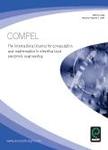版权所有:内蒙古大学图书馆 技术提供:维普资讯• 智图
内蒙古自治区呼和浩特市赛罕区大学西街235号 邮编: 010021

作者机构:Wroclaw Tech Univ Inst Elect Elect Machines Drives & Measurements Wroclaw Poland
出 版 物:《COMPEL-THE INTERNATIONAL JOURNAL FOR COMPUTATION AND MATHEMATICS IN ELECTRICAL AND ELECTRONIC ENGINEERING》 (国际电气与电子工程计算与数学杂志)
年 卷 期:2007年第26卷第4期
页 面:1161-1174页
核心收录:
学科分类:0808[工学-电气工程] 08[工学] 0701[理学-数学] 0812[工学-计算机科学与技术(可授工学、理学学位)]
主 题:induction motors estimation observer MRAs
摘 要:Purpose - This paper aims to obtain an accurate and robust estimation method of the rotor flux and speed for the sensorless induction motor (IM) drive. Design/methodology/approach - The reduced order observer has been used as an online tuned rotor flux model in the model reference adaptive system (MRAS) concept applied for the IM speed estimation. The output of this observer was used also as a feedback signal required in the direct field-oriented control (DFOC) structure of the IM. Findings - It is shown that a new rotor flux and speed estimator are more robust to motor parameter changes in comparison with the classical MRAS estimator and can work stably in the DFOC structure, in the wide speed range, even for relatively high (50 per cent) identification errors of equivalent circuit parameters of the IM. Research limitations/implications - The investigation looked mainly at the estimation accuracy performance and whole system stability while economic issues will still need to be addressed. Practical implications - The proposed new improved MRAS speed estimator can be easily realised using modern digital signal processors. The implementation was tested in an experimental set-up with floating point DSP used as the system controller. The fixed-point realisation needs to be developed to obtain the practical application in the industrial drive systems. Originality/value - The application of the reduced order flux observer as a tuned flux model in the MRAS type speed estimator instead of the simple, but very sensitive to motor parameter uncertainties, current flux model, enables much better accuracy and stability of the rotor speed estimation in the complex DFOC structure than in the case of classical MRAS estimator.